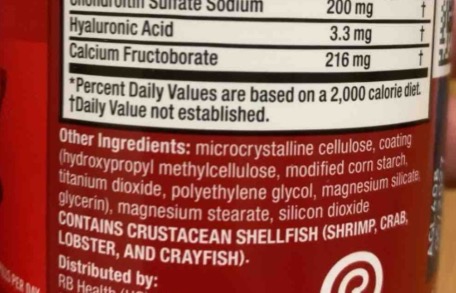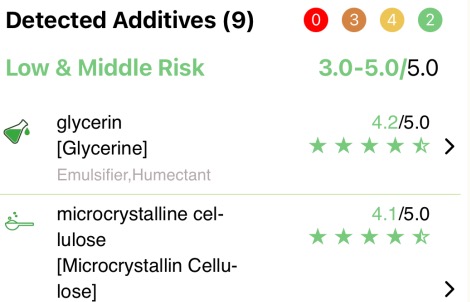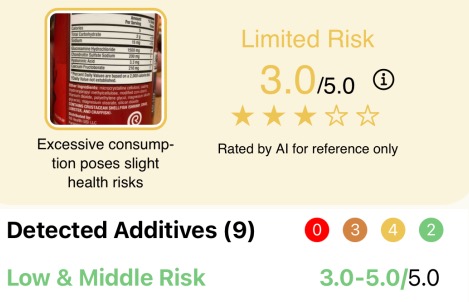Keep It Simple, Eat with Ease
Scan ingredients for safety and receive personalized dietary advice,
tailored to your health, with our global app.
What Can EatEase Do for You?
Easily Capture Food Ingredients
Simple to use, yet powerful and fully featured.

AI Detection
Powerful AI multi-language OCR and international food additive standards.

Clear Analysis Results
Safety levels shown with different colors based on ratings.

What Can EatEase Tell You?
Unveiling Phosphates in Shrimp: Health Risks and Smart Avoidance Strategies
March 17, 2025
#Food Additives#Seafood#Shrimp#Phosphates#Phosphorus
Phosphates in shrimp exceed safe levels by 145%, posing a hidden threat to your health! This article uncovers the 'moisture trap' in shrimp processing, explains the reasons behind excessive phosphate use and its potential risks, and offers practical strategies for health-conscious readers. Learn how to make informed ingredient choices and safeguard your dining table.
Why the U.S. Uses Far More Food Additives Than Europe ?
February 19, 2025
#Food Additives#U.S. Food Additives#European Food Additives#Regulatory Systems
This blog explains why the U.S. approves more food additives than Europe, focusing on differences in regulatory systems and risk assessment philosophies. The U.S. uses the GRAS system, allowing additives without full FDA review, while Europe requires thorough safety evaluations. The U.S. adopts a "safe until proven harmful" approach, whereas Europe is more cautious with a "precautionary principle." Other factors, like public awareness and economic influences, also contribute to the disparity
Additive of the Day: What is E110 Sunset Yellow? Understanding Your Food’s Color
February 12, 2025
#E110#Sunset Yellow#FD&C Yellow 6#Synthetic Dyes#Additive of the Day
Have you ever wondered why some candies, drinks, or snacks have such a bright, inviting yellow color? Chances are, they contain a food additive called E110 Sunset Yellow, also known as FD&C Yellow 6.
Additive of the Day: INS 105 Carthamus Yellow – A Natural Colorant Widely Used but Unapproved in the EU and US
January 22, 2025
#Food Additives#Carthamus Yellow#CI Food Yellow 14#INS 105#E 105#INS 102#INS 104#Quinoline Yellow#Tartrazine
INS 105 (Carthamus Yellow) is a natural food colorant derived from safflower petals, valued for its vibrant hue and clean-label appeal. While widely accepted in countries like China and India, it faces regulatory restrictions in the EU and the US due to concerns over purity and safety. This contrast highlights the global debate surrounding natural additives and their use in modern food systems.
Additive of the Day: Unveiling Quinoline Yellow(INS 104)- The Secret Behind the Bright Colors in Your Food
January 17, 2025
#Food Additives#Quinoline Yellow#CI Food Yellow 13#E-104#INS 104
Quinoline Yellow is a widely used food dye that adds vibrant colors to candies, drinks, and more. However, countries have vastly different attitudes towards its use: the EU imposes strict limits, the US bans it, while India widely embraces it. This article explores its uses, history, varying regulations, and safety concerns, offering a closer look at the complexities surrounding this colorful additive.
Additive of the Day: INS 102 (Tartrazine) – The Color Behind Your Favorite Foods
January 14, 2025
#Food Additives#Tartrazine#FD&C Yellow No. 5#CI Food Yellow 4#E 102#INS 102
The article covers the synthetic food coloring Tartrazine (INS 102), its origins, history, uses, and safety. Common in processed foods like candies, sodas, and snacks, Tartrazine provides a stable yellow color. The article discusses its chemical composition, differences from natural colorants, potential allergic reactions, and how to identify it on food labels. It also highlights Tartrazine's role in the food industry, offering useful insights for those concerned about food additives.
How AI Simplifies Understanding Complex Food Labels
January 6, 2025
Confused by food labels filled with cryptic ingredients and codes like 'E621'? Discover how AI is revolutionizing the way we decode ingredient lists, assess health risks, and make smarter, healthier food choices. Learn how scanning apps, personalized recommendations, and future innovations like AR can demystify your next grocery trip!
The Hidden Truth Behind 'Healthy' Food Packaging: How Clever Design Deceives Your Choices
December 31, 2024
#Food Packaging#Healthy Eating#Food Additives#Nutrition
This article reveals how food packaging uses clever design and misleading labels to create a false sense of healthiness. Terms like “low-fat” and “sugar-free” can often mask unhealthy ingredients. By examining marketing tactics and legal loopholes, it offers tips on how consumers can make informed choices and avoid being deceived by packaging.
Why You Should Always Read Food Labels When Shopping: Key Information That Could Impact Your Health
December 26, 2024
#Food Labels#Food Additives#Artificial Sweeteners#Trans Fats#Artificial Colors#Artificial Flavors
In today's world, we're constantly surrounded by thousands of food products, most of which are packaged in eye-catching, brightly colored wrappers.




